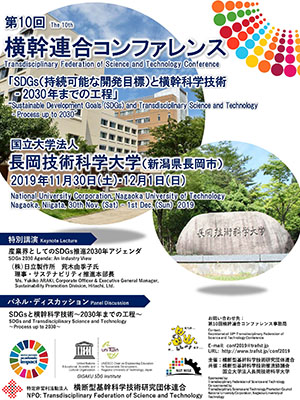10th TRFST Conference
Displaying 51-75 of 75 articles from this issue
-
Session ID: D-4
Published: 2019
Released on J-STAGE: December 16, 2019
Download PDF (1578K)
-
Session ID: D-5
Published: 2019
Released on J-STAGE: December 16, 2019
Download PDF (1049K) -
Session ID: D-5
Published: 2019
Released on J-STAGE: December 16, 2019
Download PDF (1484K) -
Session ID: D-5
Published: 2019
Released on J-STAGE: December 16, 2019
Download PDF (1145K) -
Session ID: D-5
Published: 2019
Released on J-STAGE: December 16, 2019
Download PDF (753K) -
Session ID: D-5
Published: 2019
Released on J-STAGE: December 16, 2019
Download PDF (2073K) -
Session ID: D-5
Published: 2019
Released on J-STAGE: December 16, 2019
Download PDF (671K)
-
Session ID: E-4
Published: 2019
Released on J-STAGE: December 16, 2019
Download PDF (700K) -
Session ID: E-4
Published: 2019
Released on J-STAGE: December 16, 2019
Download PDF (1529K) -
Session ID: E-4
Published: 2019
Released on J-STAGE: December 16, 2019
Download PDF (506K) -
Session ID: E-4
Published: 2019
Released on J-STAGE: December 16, 2019
Download PDF (931K)
-
Session ID: E-5
Published: 2019
Released on J-STAGE: December 16, 2019
Download PDF (1312K) -
Session ID: E-5
Published: 2019
Released on J-STAGE: December 16, 2019
Download PDF (527K) -
Session ID: E-5
Published: 2019
Released on J-STAGE: December 16, 2019
Download PDF (1613K) -
Session ID: E-5
Published: 2019
Released on J-STAGE: December 16, 2019
Download PDF (1207K) -
Session ID: E-5
Published: 2019
Released on J-STAGE: December 16, 2019
Download PDF (987K)
-
Session ID: F-4
Published: 2019
Released on J-STAGE: December 16, 2019
Download PDF (328K) -
Session ID: F-4
Published: 2019
Released on J-STAGE: December 16, 2019
Download PDF (266K)
-
Session ID: F-4
Published: 2019
Released on J-STAGE: December 16, 2019
Download PDF (1218K) -
Session ID: F-4
Published: 2019
Released on J-STAGE: December 16, 2019
Download PDF (426K)
-
Session ID: F-5
Published: 2019
Released on J-STAGE: December 16, 2019
Download PDF (255K) -
Session ID: F-5
Published: 2019
Released on J-STAGE: December 16, 2019
Download PDF (322K) -
Session ID: F-5
Published: 2019
Released on J-STAGE: December 16, 2019
Download PDF (537K) -
Session ID: F-5
Published: 2019
Released on J-STAGE: December 16, 2019
Download PDF (425K) -
Session ID: F-5
Published: 2019
Released on J-STAGE: December 16, 2019
Download PDF (162K)
